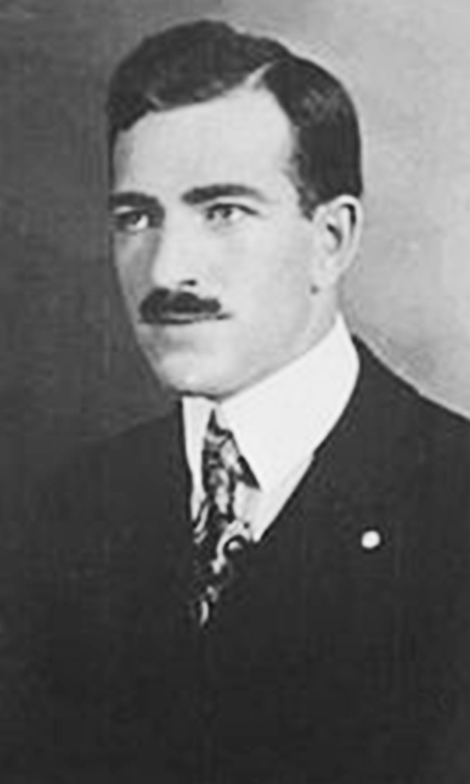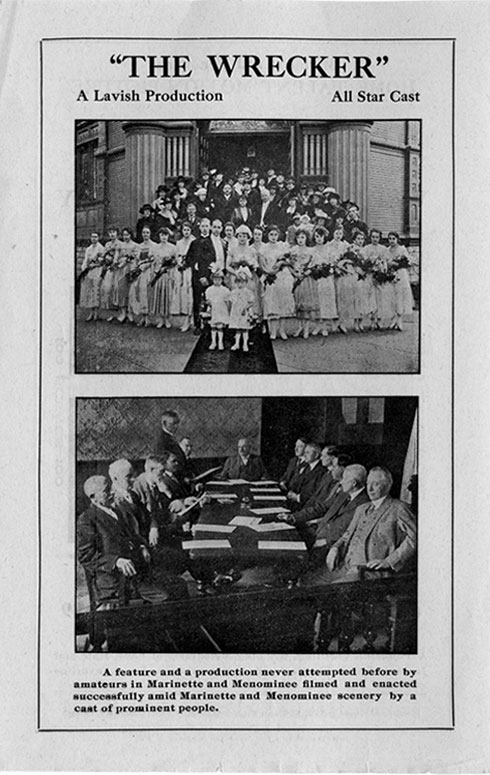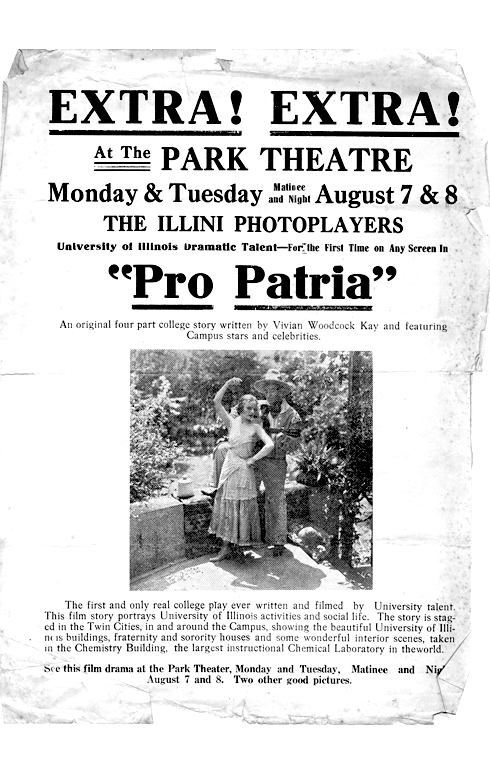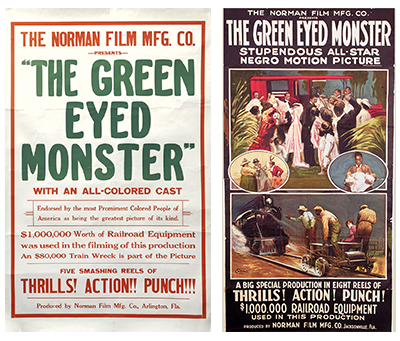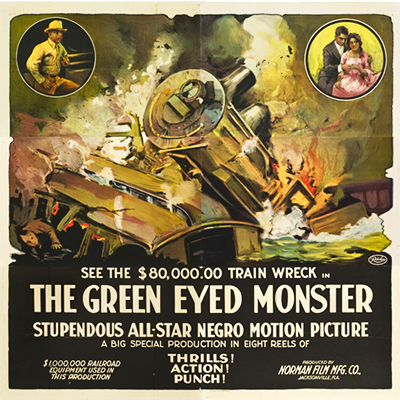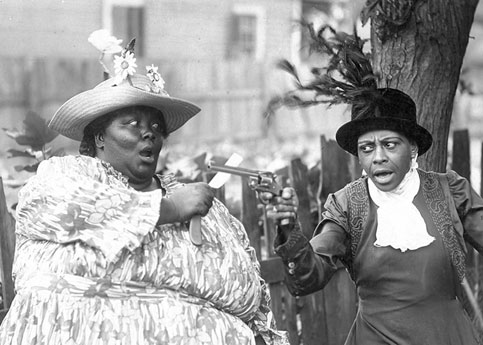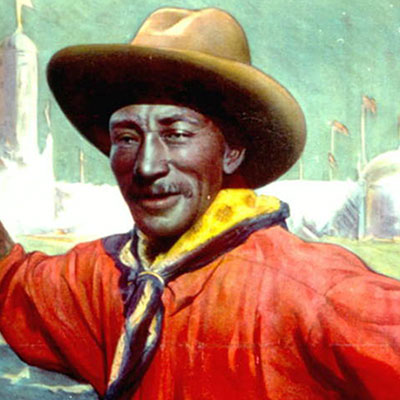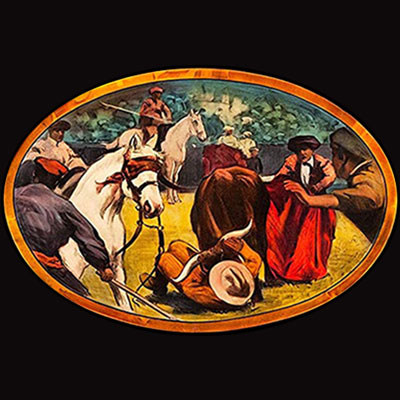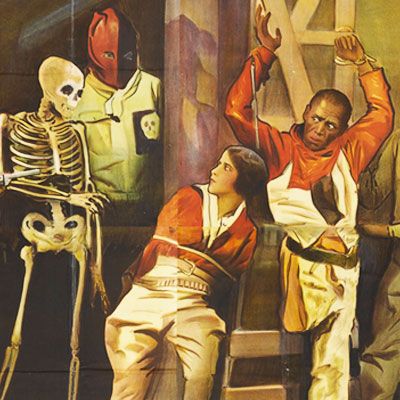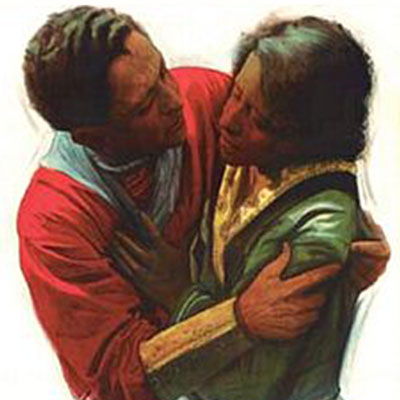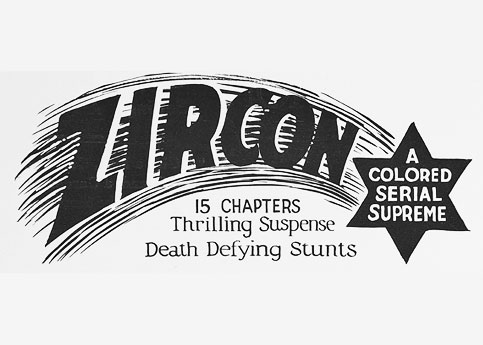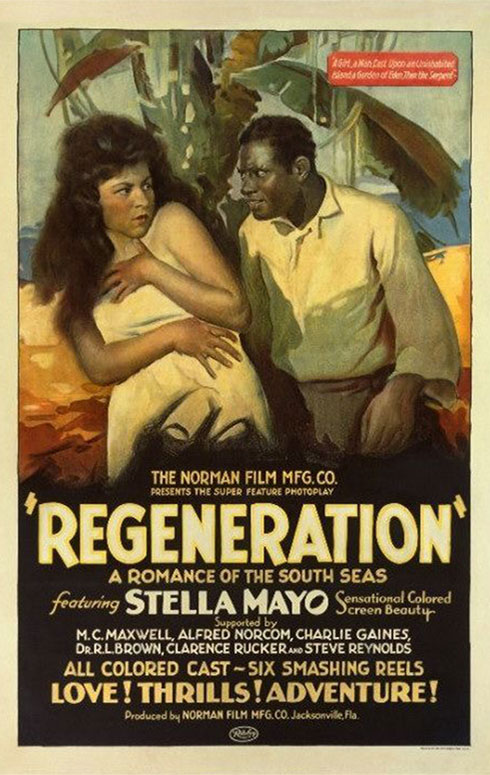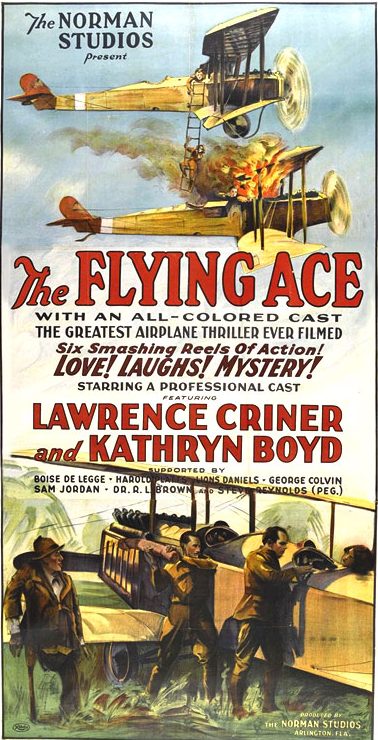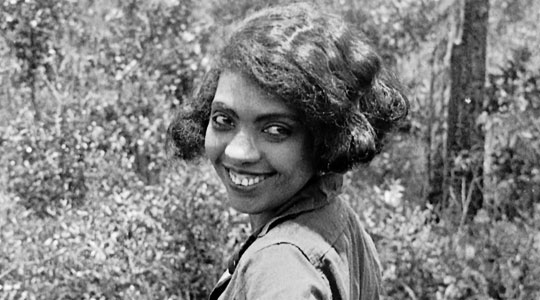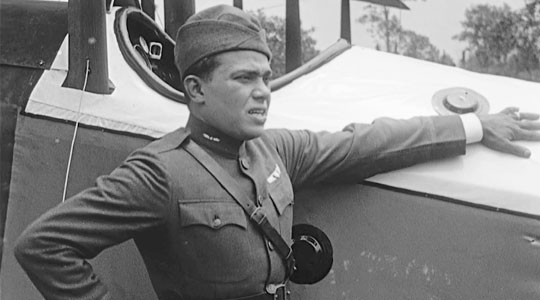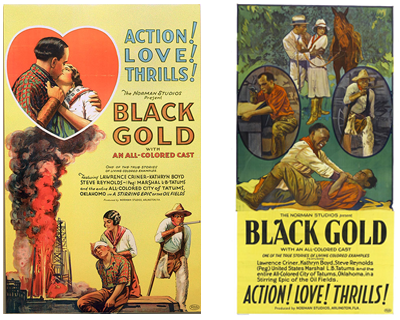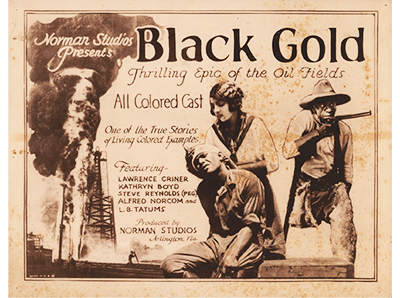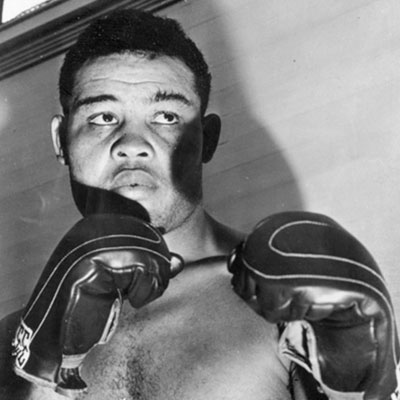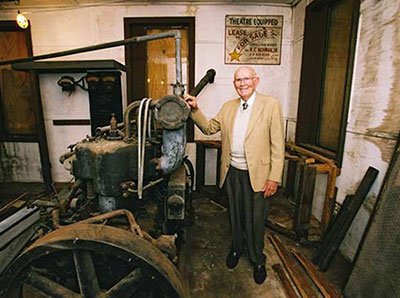RICHARD E. NORMAN (1891-1960)
Norman Film Manufacturing Company
Among his first business ventures was the development of a cola-based drink that he called “Passi-Kola.” With the pharmaceutical expertise and technical support of his druggist father, Richard concocted a formula for what he touted as an ideal beverage that possessed remarkable life-giving power and which he hoped would rival Coca-Cola. Although he managed to interest at least one major business in the product, no deal was ever struck; and ultimately Passi-Kola proved to be a bad investment.
As his son Captain Richard E. Norman observed, the enterprising Norman was among the first motion picture producers to recognize the commercial possibilities of contracting with cities to make “movies of municipal progress”.[1] Norman’s first films were fairly straightforward industrial advertising shorts for local businesses and promotional pictures for civic and fraternal organizations. According to surviving documents from those early years, Norman would be paid a set amount for each foot of film that he shot “depicting scenes, buildings and streets . . . and such other subjects as may be selected and determined.”
As “home-talent” (or “local-talent”) motion pictures—short films with local people in the cast—became the latest stunt nationwide, Norman began promoting himself as a traveling film producer. After scouting out promising towns in the Midwest, he would invite the citizens—especially those who were most prominent or distinguished—to act out little skits, which he then filmed, developed in his own lab, and later showed at area theaters to crowds of locals who were thrilled to see themselves on the movie screen.
Perhaps the best testament to The Wrecker’s popularity was its longevity. Norman’s records show that local versions of the photoplay were filmed and shown, mostly in the Midwest, for more than four years.
Norman’s early pictures, however, were not limited to railroad adventures, hen-house comedies, and collegiate capers. He also filmed a number of short historical films, including Buried Alive, subtitled “Historical Indian Production of John Stink, Osage Indian Outcast,” which recounted a tale of love, hate, and intense rivalry in an Osage village in the 1870s. Produced around the same time, his Real Facts About the North Field Minnesota Bank Robbery, or The Younger Brother in Minnesota had a similar Western orientation. Still another of his short historic pictures, Bell [sic] Starr, A Female Desperado, made around 1915 or 1916, told the story of an even more notorious American outlaw: Belle Starr, the “Bandit Queen,” renowned for her crack shooting skills, her stylish wardrobe, her Native American husband, and her colorful male companions, including Jesse James and Cole Younger, who was rumored to have fathered her child.
By the end of the 1910s, anxious to move beyond local-talent, industrial, and historical shorts into the burgeoning business of feature films, Norman decided to relocate to the South. Other filmmakers—from Kalem, Motograph, and Selig to Essanay, Lubin, and Vim—had already discovered the advantages of Florida, which, by the time of Norman’s arrival, had become an early center of silent film production. In particular, Norman’s hometown of Jacksonville offered a number of distinct advantages: a climate suitable for year-round filming, good transportation links to New York and other East Coast destinations, and relatively low land and labor costs.
For his first race feature, Norman revisited a subject that he had successfully explored in scores of earlier home-talent motion pictures. The Green-Eyed Monster was a black-cast remake of Norman’s familiar railroad adventure and love story The Wrecker. For his feature-length film of The Green-Eyed Monster, however, Norman realized that he would have to rework the material significantly. So he added characters, developed the relationships between them, and extended the action by incorporating chase scenes and other plot elements typical of contemporary popular serials. He also decided to give the picture a fresh twist by introducing a comic subplot that paralleled the main plot.
In his advertisements, Norman was quick to point out that “THERE IS NOT A WHITE MAN IN THE CAST, nor is there depicted in the entire picture anything of the usual mimicry of the Negro” (a phrase that he repeated often in describing his black-cast productions). That all-black casting was no doubt the reason that The Green-Eyed Monster was “endorsed by the most prominent colored people of America” as well as by Norman’s fellow producers. Even George Johnson, co-founder and manager of the Lincoln Motion Picture Company, who—as Matthew Bernstein and Dana F. White[5] noted, was never one to lavish praise on his competitors—described the film as “one of the biggest drawing cards ever played to negro houses . . . . By no means a comparison to Micheaux pictures in class or acting or direction; nevertheless because of its thrills and action went over big.”
This in turn allowed him to explore other innovative themes and approaches in his subsequent film projects. His next picture was a black-cast Western—actually, a pair of Westerns—shot on location in Oklahoma, a territory he had visited often during his years as a traveling home-talent film producer in the 1910s.
Like the Johnsons and Micheaux, Norman recognized both the novelty and the symbolic value of Western themes and characters. Filming on and around the famed Miller Brothers’ 101 Ranch, Norman captured exciting footage of black cowboys, including Bill Pickett, a legendary black rodeo and trick rider. Pickett’s most famous stunt involved immobilizing a steer by biting its lip, a feat that earned him the name “The Bulldogger.” Using that footage along with other footage that he purchased, Norman produced The Bull-Dogger, a thinly-plotted Western that starred Pickett and distinguished stage actress Anita Bush (known as “The Mother of Colored Drama”). Framed by a story of the romance between Pickett’s “motherless daughter” Anita (played by Anita Bush) and Bar L Ranch cattle boss Tom Stone, the “Round-Up film” highlighted the riding and roping stunt performances of Pickett and other “Colored Cowboy Champions of the World.” But, as even the promotional materials suggested, the plot was secondary to the action. The five-reel film was shot quickly and on a small budget. Norman encouraged his actors to provide their own costumes, rented chaps and guns, borrowed props from his mother, and even sewed the outlaws’ hoods himself.
Poster images from The Bull-Dogger, featuring legendary black cowboy Bill Pickett, and The Crimson Skull
Norman’s second Western, The Crimson Skull, was more conventionally plotted. Filmed at the same Oklahoma location, with most of the same cast (a common practice, whenever possible, among cash-strapped race filmmakers), it was a story of adventure and suspense. Cattleman Lem Nelson is persuaded to take the job of sheriff and restore the tranquility of the all-black town of Boley, which is being destroyed by the “Terrors,” a band of hooded outlaws led by “The Skull.” Through the efforts of Nelson’s ranch foreman Bob Calem, who is in love with Nelson’s daughter Anita (Anita Bush), and ranch-hand “Peg” (one-legged Steve Reynolds), the villain is eventually exposed and revealed to be the sheriff’s own son Buck. Appearing in a triple role that included hero and villain was Lawrence Chenault, who distinguished himself not only by his acting but also by the prodigious amounts of liquor that he managed to consume.
As always, Norman urged exhibitors to promote the picture vigorously. Among the stunts that he recommended were the hiring of a man in a skeleton costume to ride through “the Colored section,” the mounting of lobby displays in the theaters, and the use of Steve “Peg” Reynolds to make personal appearances and to ballyhoo with his vaudeville act. Despite some problems with censors, who objected to scenes of “masked criminals, shooting and other violence of all kinds, robbery and successful defiance of authorities throughout,”[6] both Westerns opened strong and continued to pack in audiences, often to standing-room only. But like most race film producers, Norman lacked a good distribution outlet for his productions. Feeling the inevitable financial pinch, he began exploring other options, such as State Righting some of his productions—that is, selling film rights to territorial distributors, who would be in charge of exploiting the picture in the territory that they controlled. At the same time, he continued to pursue contracts with individual theater managers and exhibitors, even though cultivating those relationships created new challenges, since time on the road exhibiting and promoting his pictures kept him away from the studio to make new ones.
The plot involved young chemist John Manning, who discovers a new and potentially lucrative wonder substance called “Zircon,” which the villainous “Spider” repeatedly attempts to steal. The serial incorporated all the usual dangerous but exciting “cliff-hanger” situations, as Manning and his sweetheart Helen Desmond find themselves stuck on the spinning hub of a monstrous wheel, almost suffocated by a poisonous cloud, left to die in a raging sandstorm in the desert, attacked by an army of crocodiles, bound in an airplane about to crash, captive on a burning ship, nearly devoured by a monstrous snake, and trapped in a cabin that is about to explode.
Cast in the lead role was the light-skinned beauty Stella Mayo, wife of “The Great Mayo, Magician”; in the male lead was actor and former magician M. C. Maxwell. Alfred Norcom played the villain. Also appearing was one-legged Steve “Peg” Reynolds, Norman’s longtime favorite actor, whom Norman cast in every one of his pictures. The film proved to be a complicated project: a schooner had to be hired and taken out to sea, where it was rigged with a harmless explosive for the fire scenes; and shooting required no fewer than eighty-seven interior scenes on nine different sets.
Opening strong, Regeneration played to business in theaters as high as $1,571 in a single day. And it continued to bring in large crowds when it was exhibited during roadshows. On one tour through the Carolinas, with “Peg” Reynolds along to advertise and ballyhoo[7], Norman played a single copy of the film and netted $1,547.50 over thirty-one days. As Norman boasted, he was setting records for first-run bookings on the East Coast that even Micheaux could not match.
Around the time that Regeneration was released, Norman decided to purchase the former Eagle Studios property (originally a local cigar factory). That purchase allowed him to take over an entire studio facility and turn it into his own film plant, where he could write, shoot, produce, develop, and edit his own pictures.
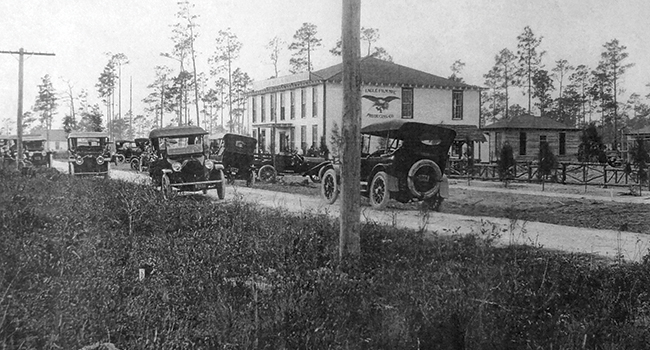
The Norman Studios in Arlington, Florida, in the early 1920s
Significantly, with the opening of his Arlington studio, Norman not only achieved his own dream. He also accomplished another landmark in the film business: he became the first (and ultimately the only) race producer to own his own studio. Neither the founders of the Lincoln Film Company, with their prestigious pedigree and popular star Noble Johnson, nor Oscar Micheaux, with his prolific film production, would ever match that feat. Norman’s establishing of his studio reconfirmed the entrepreneurial ambition that he had first revealed as a young businessman; ownership of the studio thus distinguished him in yet another way from his fellow race filmmakers.
Originally (and alternatively) titled The Black Ace, The Flying Ace featured some of the finest black performers of the day. It starred the husband-and-wife team of Lawrence Criner and Kathryn Boyd, both from the famed Lafayette Players. Also appearing were George Colvin, Boise de Legge, Lyons Daniels, Sam Jordan, and Steve “Peg” Reynolds, who performed amazing stunts such as riding a bicycle and shooting a gun through his wooden leg. Yet while ads described the film as “A Smashing Airplane Detective Mystery Done in a Smashing Way [and] The First Colored Picture with Real Flying in it, Real Stunts, Loops, Parachute Jumps, Changing Planes, Flying Upside Down, Fights on Land as Well as in the Air,” none of it was actually shot in the air. Rather, the flight scenes were simulated using a prop plane that Norman had proudly built himself.
Posters and stills from The Flying Ace, Norman’s only extant film
In the picture, Captain William (“Billy”) Stokes, a hero of World War One and a “Flying Ace,” solves the most baffling case of his career: the disappearance of Paymaster Kimball along with the $25,000 payroll of the Eastern Division. All of the clues point to the guilt of Thomas Sawtelle, the aged Station Master of the little railway station at Mayport. Ruth, the Station Master’s daughter, believes firmly in her father’s innocence and in Stokes’ ability to clear his name. Despite the efforts of Finley Tucker, a fellow aviator and rival for Ruth’s hand, to divert his attention, Stokes rescues Ruth in a daring mid-air rescue, exonerates Mr. Sawtelle, and bring the villains to justice.
Although the plot action throughout was exciting, the real star of The Flying Ace, as Phyllis R. Klotman observed, was the plane, prop though it was. It served as “the symbol of Captain Stokes’s heroism, his past triumphs, and his ability to use the new technology to good purpose.” Yet the film as a whole was definitely more aspirational than factual (since, at the time, African Americans were prohibited from service in the U.S. Air Force, and their roles in other branches of the service were restricted as well). But by transcending the racist reality of his day, Norman offered his audiences a character with whom they could identify and a “racial uplift” theme they could embrace.
As with his other features, Norman developed a full line of advertising accessories for the film, including five-color lithos, window cards, rotographs, heralds, slides, and trailers—“everything the exhibitor needed to “PUT IT OVER BIG.” Yet only a few weeks before The Flying Ace was released on September 1, 1926, Norman admitted that had he known the final cost, he would never have tackled such an ambitious mechanical picture; and he only hoped that he would be able to get his investment back.[8] Fortunately, the film opened strong and quickly became another “box office smasher.” Interest in the film, in fact, was so high that at times, according to company records, both Norman and his road man worked separate routes roadshowing it simultaneously throughout the South and the Midwest. Moreover, demand for the picture continued for almost a decade, during which time, according to the Norman Studios’ records, it grossed over $20,000.[9]
But perhaps the greatest testament to the novelty of The Flying Ace was not its box office numbers or its longevity but rather its success in showing blacks in roles that they should have had but in reality were denied. As Phyllis R. Klotman[10] noted, The Flying Ace “required the audience’s suspension of disbelief” to accept the leap from intrepid flying performer to heroic flying ace and to “buy the American screen dream of rising to the pinnacle.” Yet that notion of racial uplift—the promise of advancement through individual achievement—was central to the film because it was consistent with contemporary black ideology; and Norman was determined to give his audiences the role models that they craved but never saw in non-race studio productions.
Like The Flying Ace, Black Gold broke records in many of the theaters in which it played, especially when Reynolds performed his usual ballyhoo or when lead actors Lawrence Criner and Kathryn Boyd appeared in person to enact a “strong 15 minutes dramatic sketch each show.”[11] Norman immediately made plans for new films, including several Westerns. But in fact, there would be no more Norman productions. With the advent of talkies and with Hollywood’s growing interest in the black movie market, the landscape of the industry had shifted. Norman was no longer pitted simply against other producers of silent race films; he was forced to compete against the Hollywood studios and the promise of the new technology of sound film, which was already revolutionizing the industry. Most significant of all, in the wake of World War One and the flu epidemic and in the advent of the Great Depression, black theaters—always Norman’s primary and largest clientele—were closing, thus making distribution more problematic than ever.
Over the next two decades, Norman struggled to remain in the business, initially sinking much of his savings into an invention that he called “Camera-Phone,” a non-synchronous sound system that he marketed to theater owners. But Camera-Phone was quickly rendered obsolete by more sophisticated systems, and Norman lost his entire investment. Not one to quit, however, he continued to seek out fresh ways to distribute and promote his older films—for example, by contracting with the U.S. Army Motion Picture Service in Washington, D.C., to show his films at the black theater at Fort Benning, Georgia, and by selling prints to companies such as “The Heroh Motion Picture Company of Liberia,” which were anxious to introduce “Negro Artists” into their shows.[12] (The Liberian interest in American race films and performers likely originated in the Back-to-Africa Movement, which began in the nineteenth century but found its strongest voice in Marcus Garvey, an early-twentieth-century black nationalist who believed that black men and women needed to rediscover their race pride by returning to Africa and establishing a permanent homeland there.)
Norman also tried leasing out his studio to other producers—usually with little success. By then, most producers wanted facilities that would allow them to produce sound pictures, and Norman could not afford the accommodations that sound production would require. So, by the 1930s, he returned to the roadshowing of his own films along with a few other staple films that he purchased or leased (to provide a “double feature”) at churches, schools, and auditoriums. Establishing viable routes was a challenge, and the work itself was tedious. After splitting the profits with exhibitors, he often had little to show for his efforts. For example, on a good night, Norman netted as much as $30; on a poor night, as little as $4.64. Most nights, the net was somewhere in between—still quite a meager return for a filmmaker whose pictures had grossed hundreds of dollars per night only a few years earlier.
Throughout the 1930s and into the early 1940s, in addition to spending time on the road, Norman continued to use his studio in Jacksonville for other commercial projects, such as industrial filmmaking and commercial advertising for local businesses. By the mid-1940s, when Norman was no longer showing pictures on the road, he found yet another way to keep his hand in the business of film distribution and exhibition. Together with his wife Gloria, he opened and operated his own motion picture houses, which included the Ace Theatre, in Apopka, Florida, and the “Famous Theatre (For Colored)” in Winter Park, Florida. He was still operating his theaters into the 1950s, when he grew increasingly ill and died, of cancer, in Jacksonville on November 7, 1960. His death brought to a close a remarkable but often underappreciated career.
Although Norman’s work was largely forgotten after his death, his achievements—as entrepreneur, inventor, businessman, independent roving “home-talent” filmmaker, film developer, and race feature producer—have finally begun to garner the attention they rightly deserve. In the peak years of early race cinema, he and his fellow race filmmakers—Oscar Micheaux, the Johnson Brothers, Reol Productions—constituted a kind of distinct and virtually underground cinema. Through their pioneering pictures, they attempted to reach the black audience that was largely ignored by the major motion picture studios. Despite problems with small budgets and poor distribution channels, they were somehow able to produce and release films that went beyond stereotypical representation and to depict African Americans as a vital presence in American life. Their extraordinary contributions merit Norman and his contemporaries a prominent place in American cinema history.

